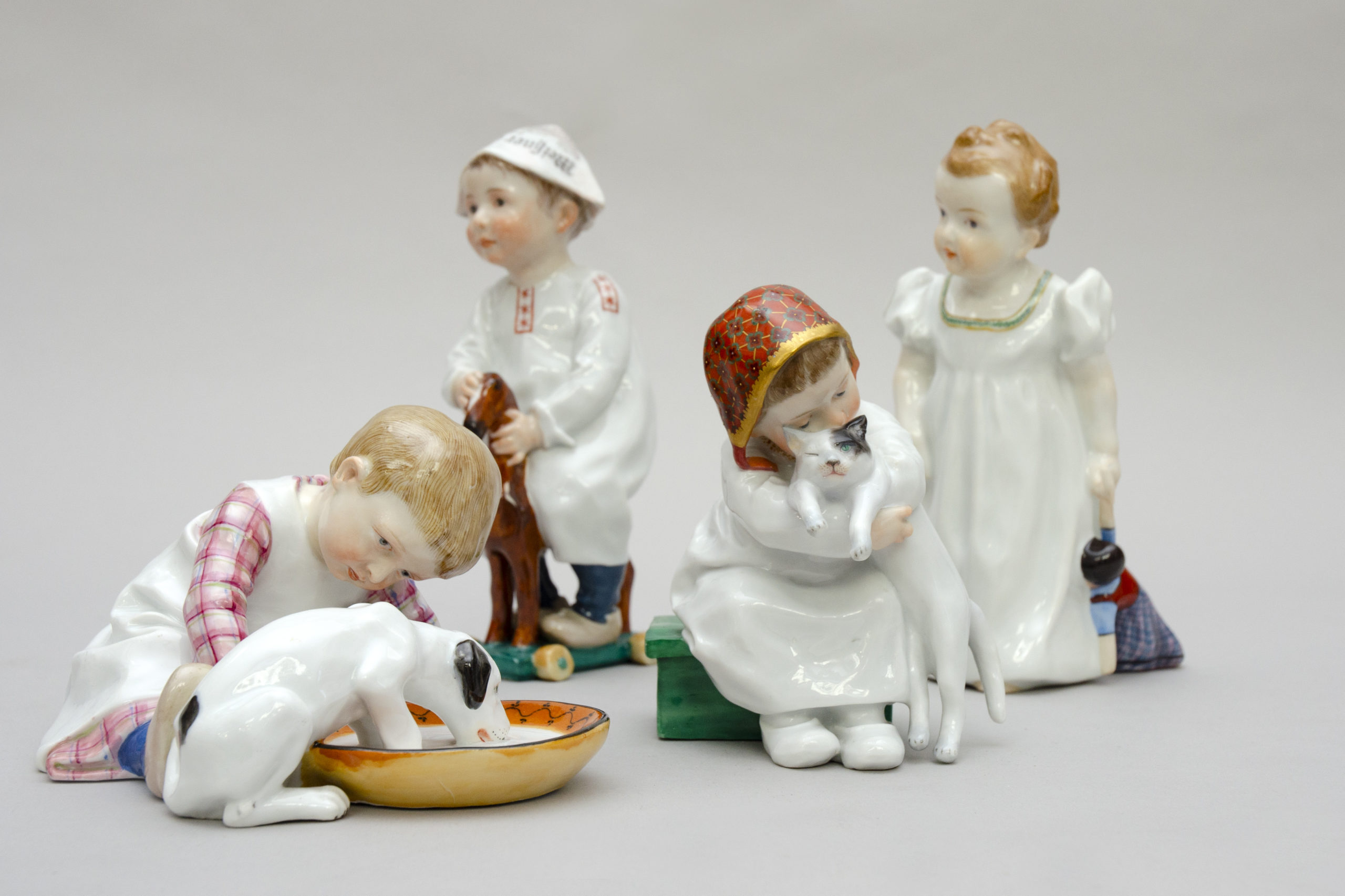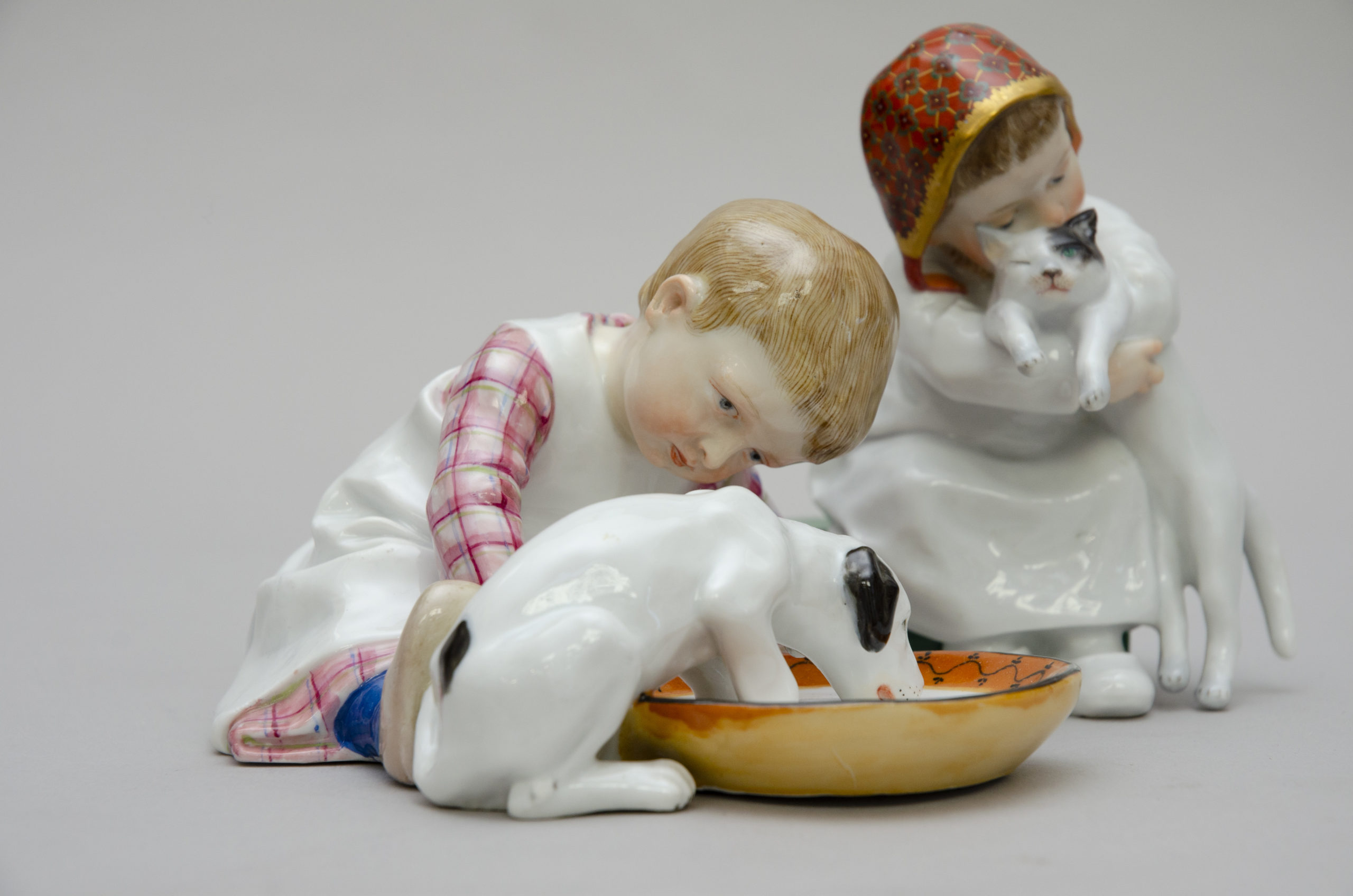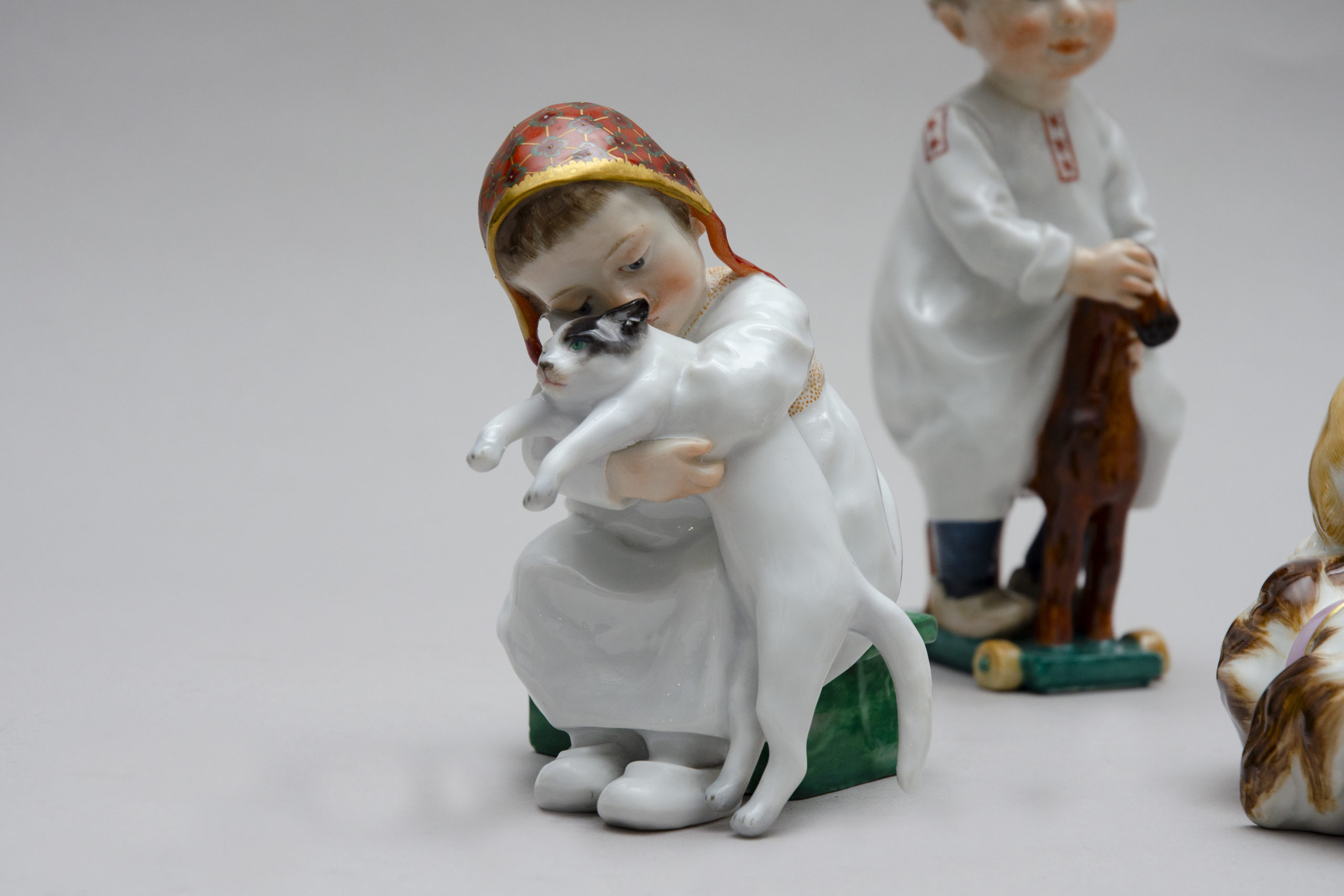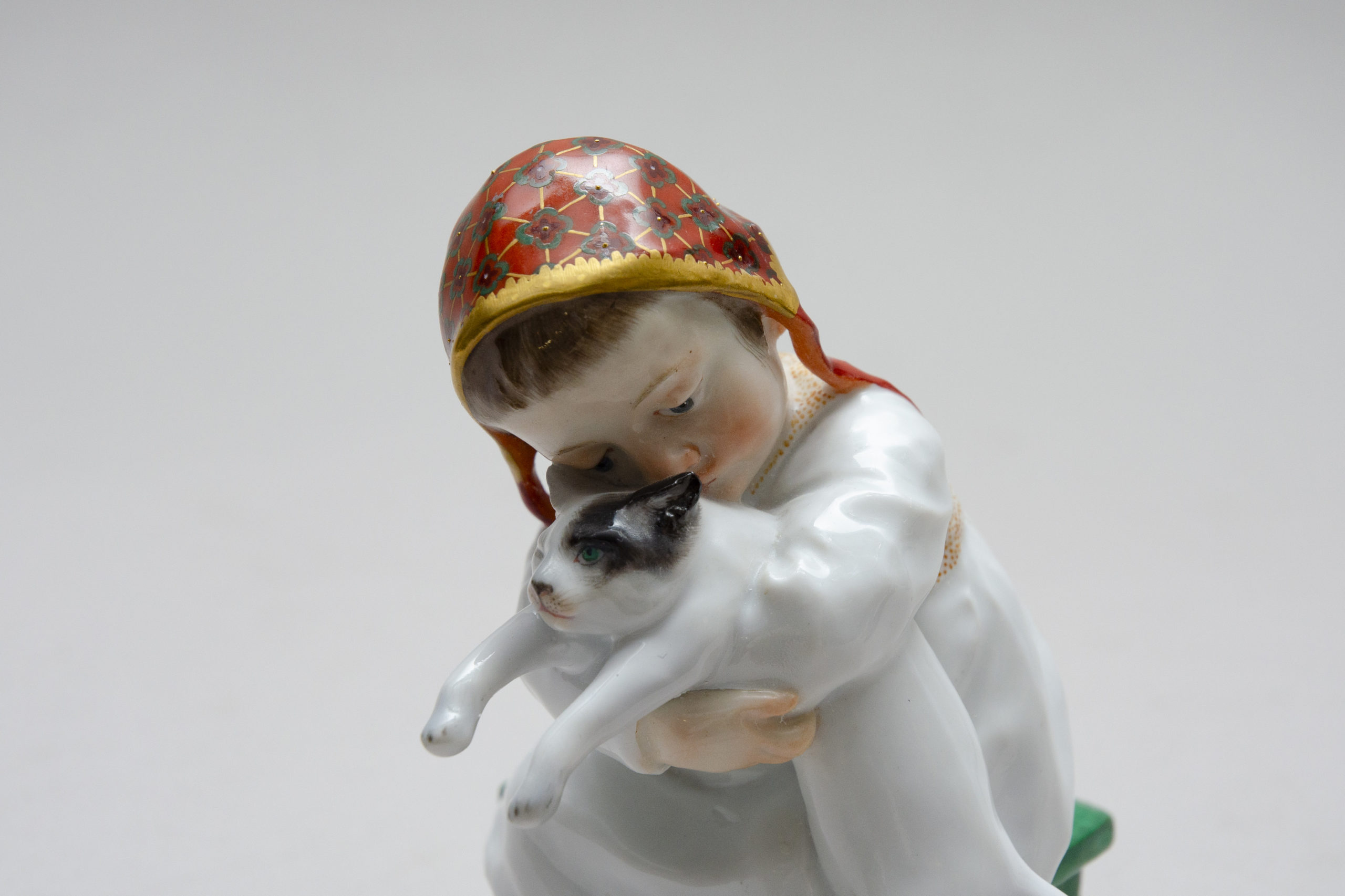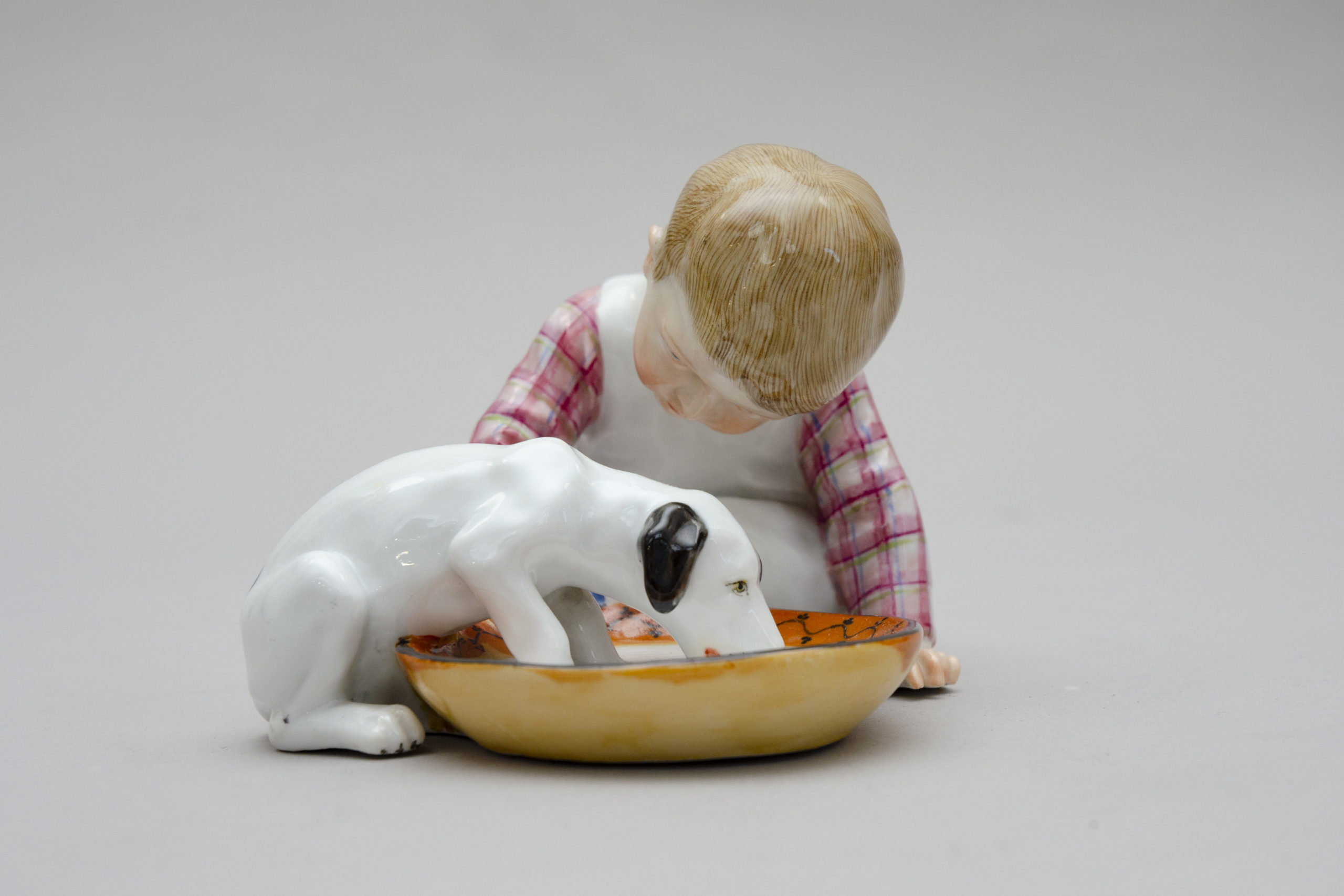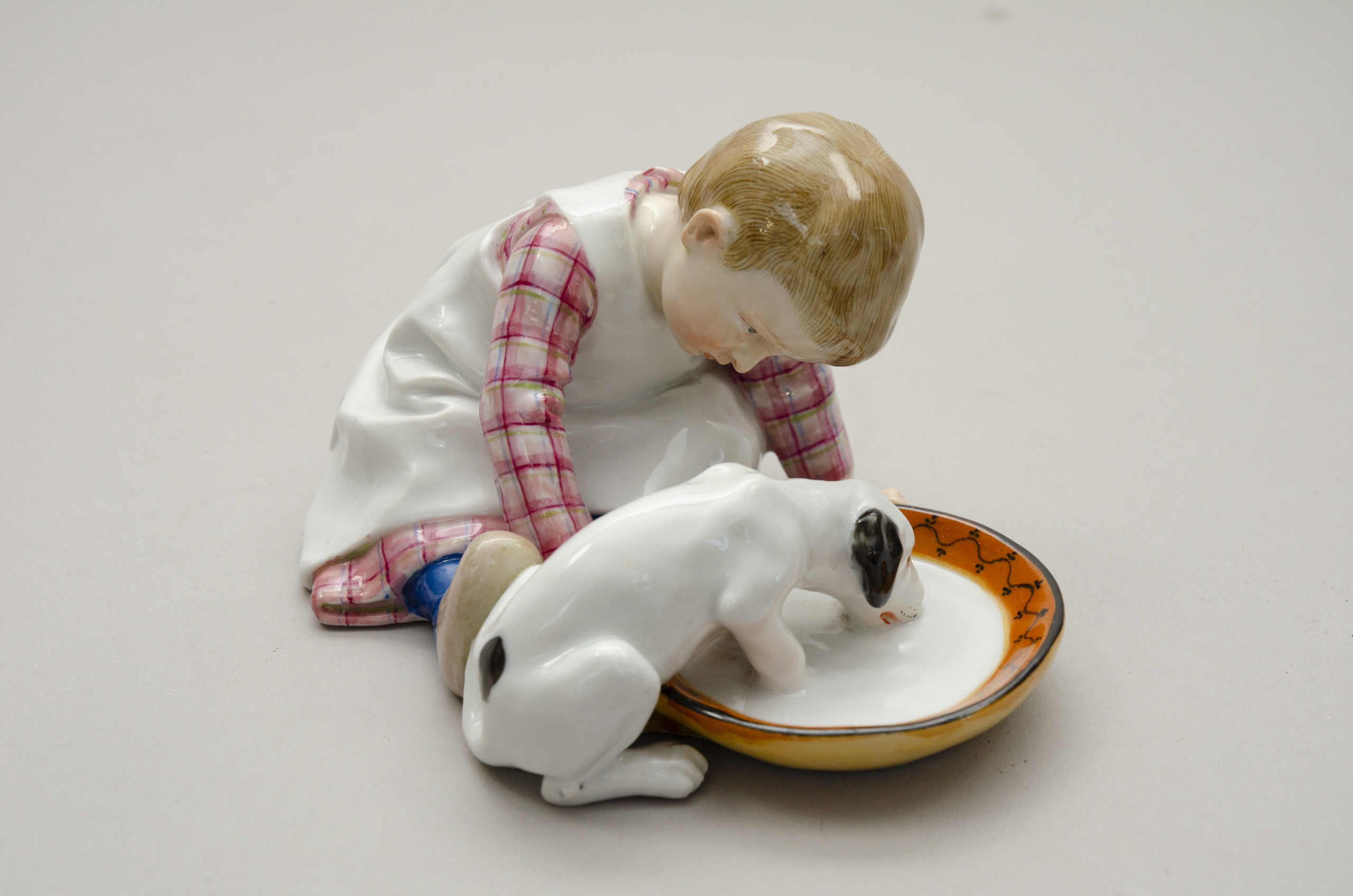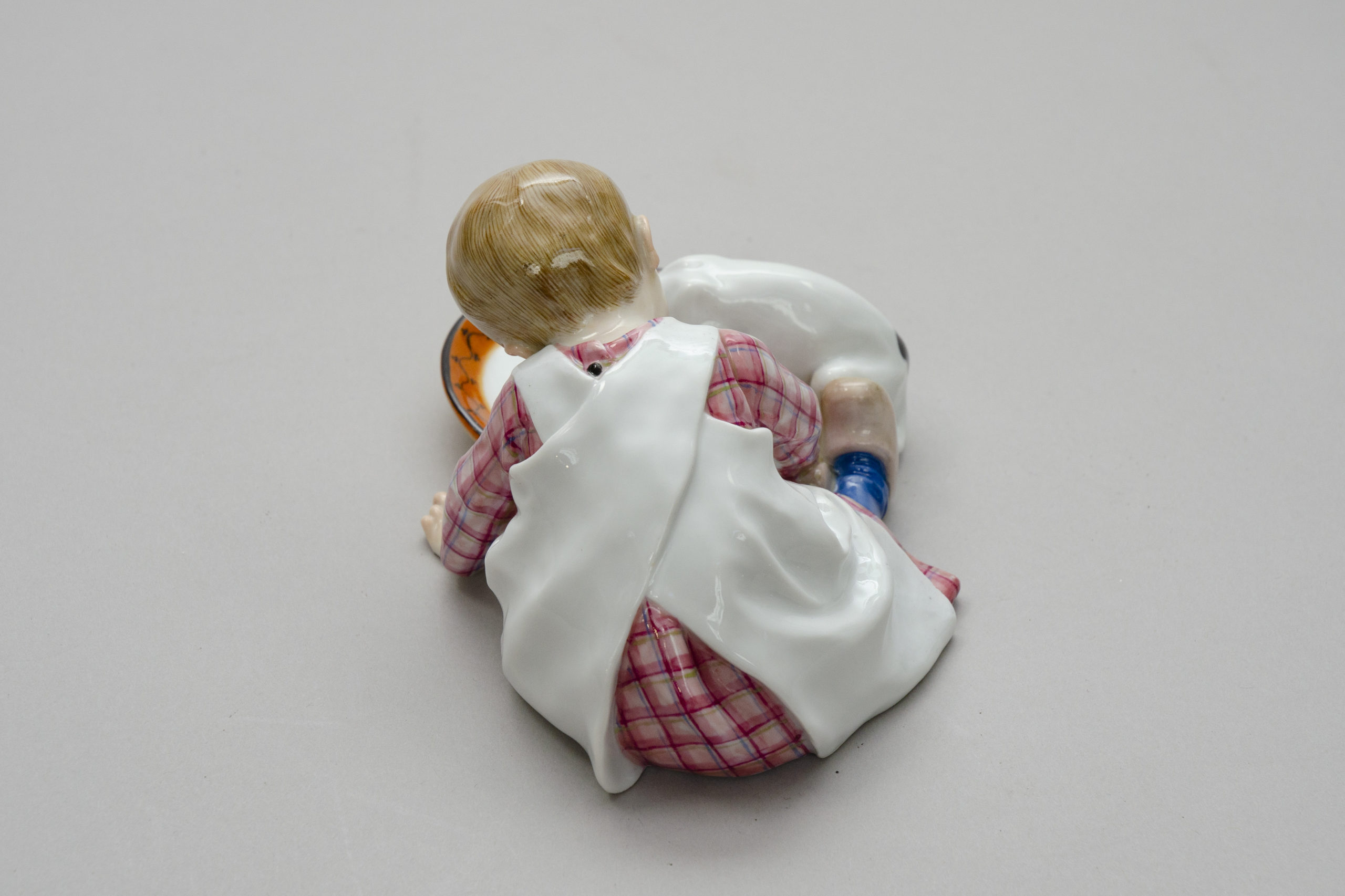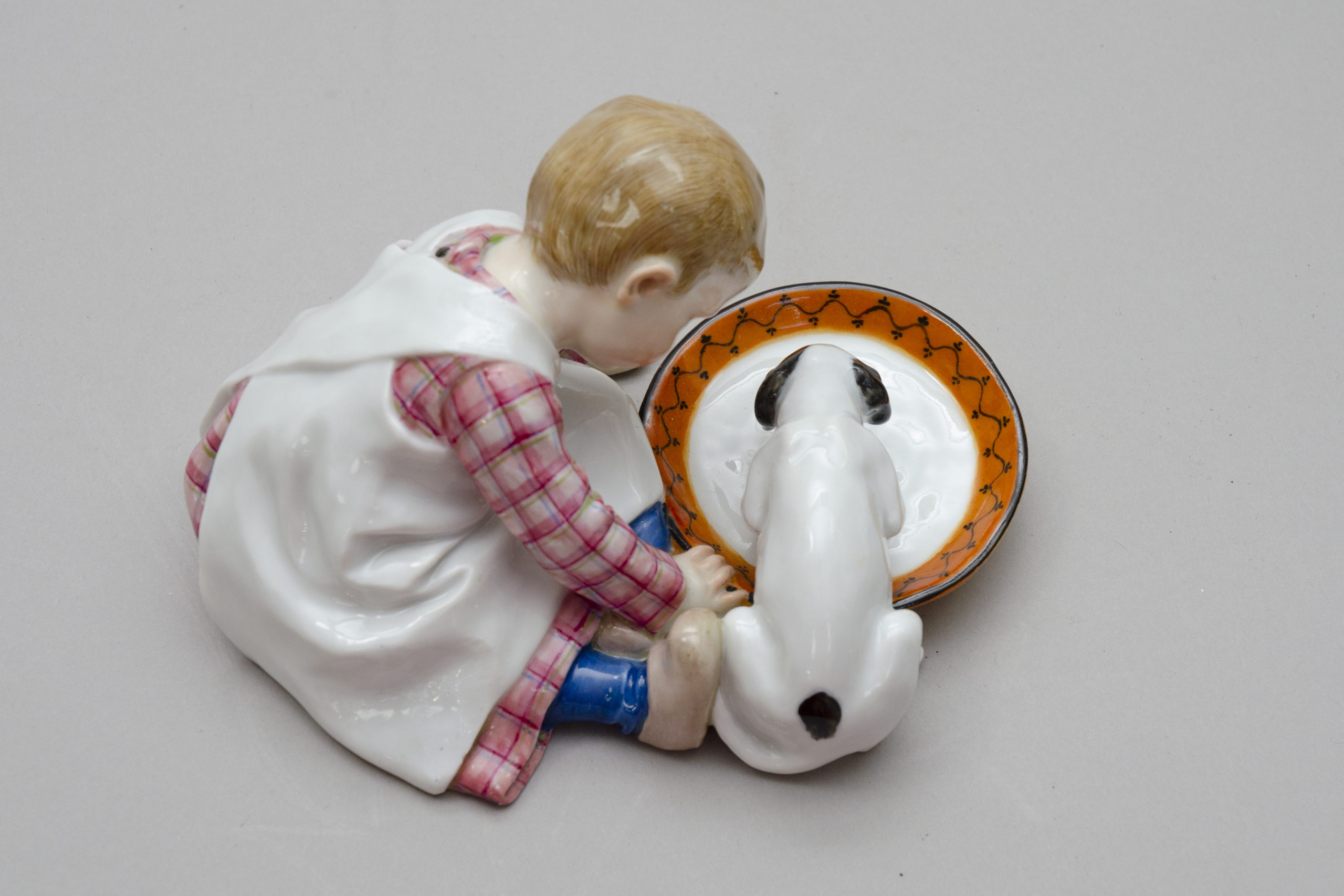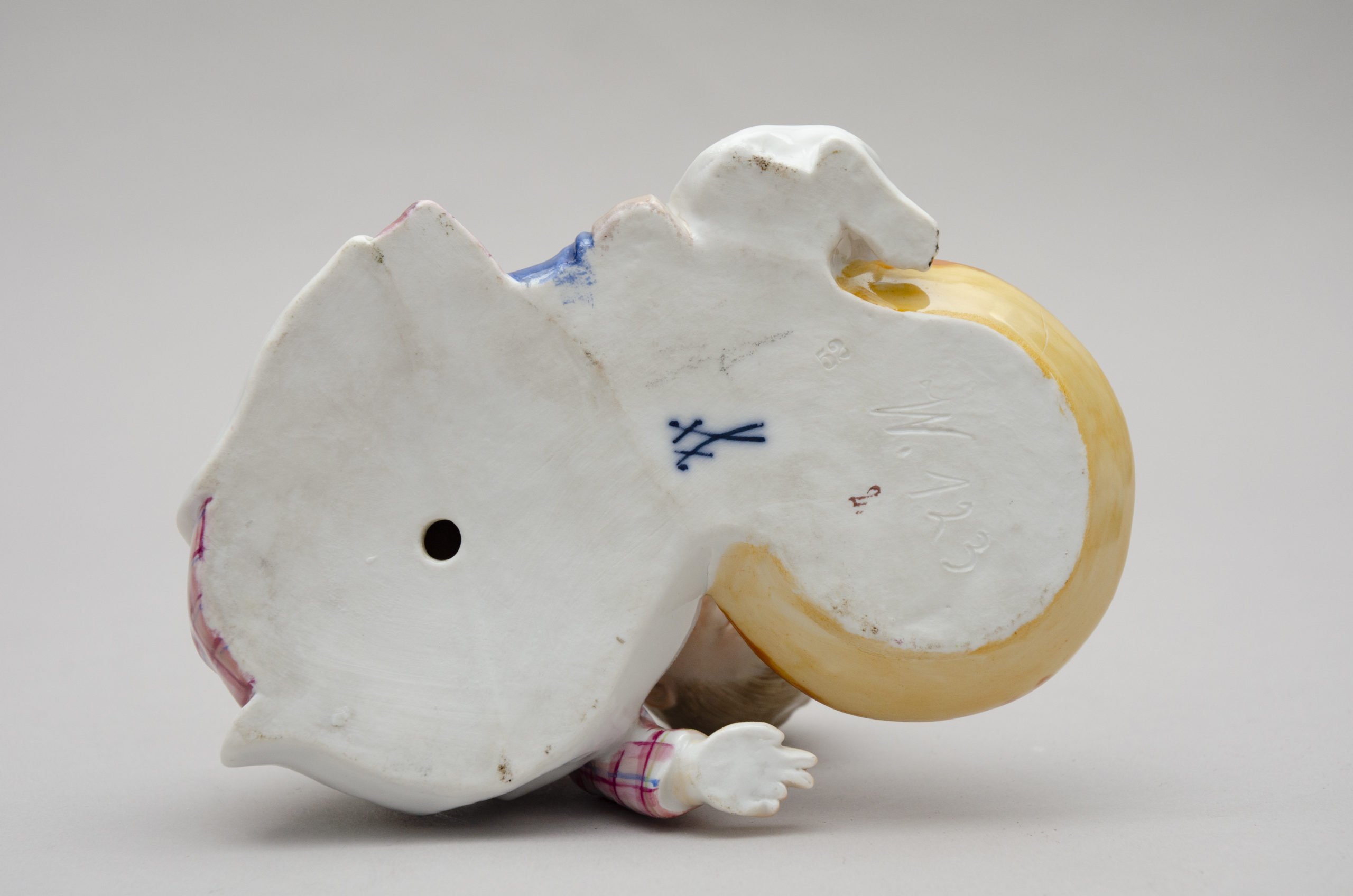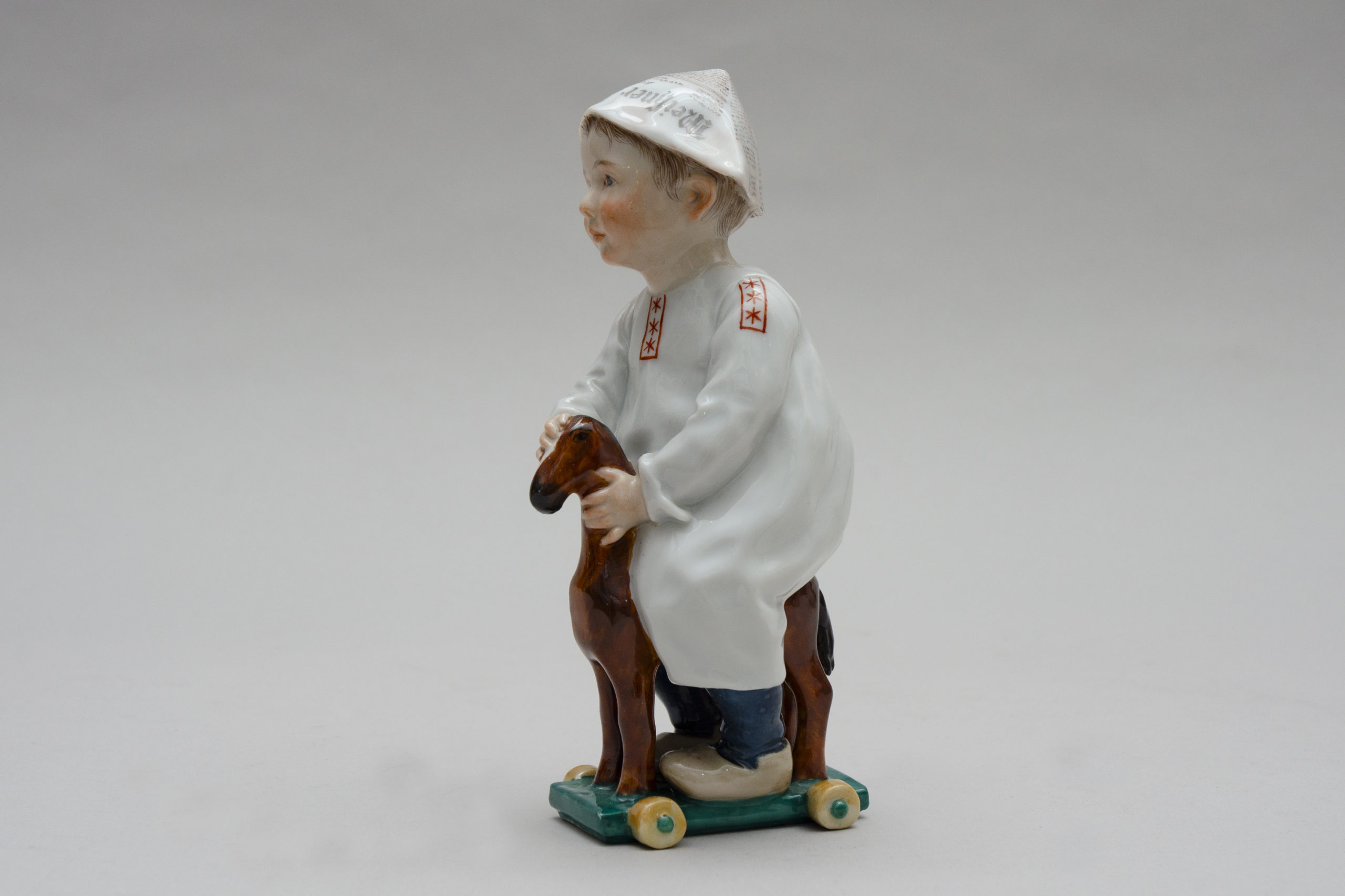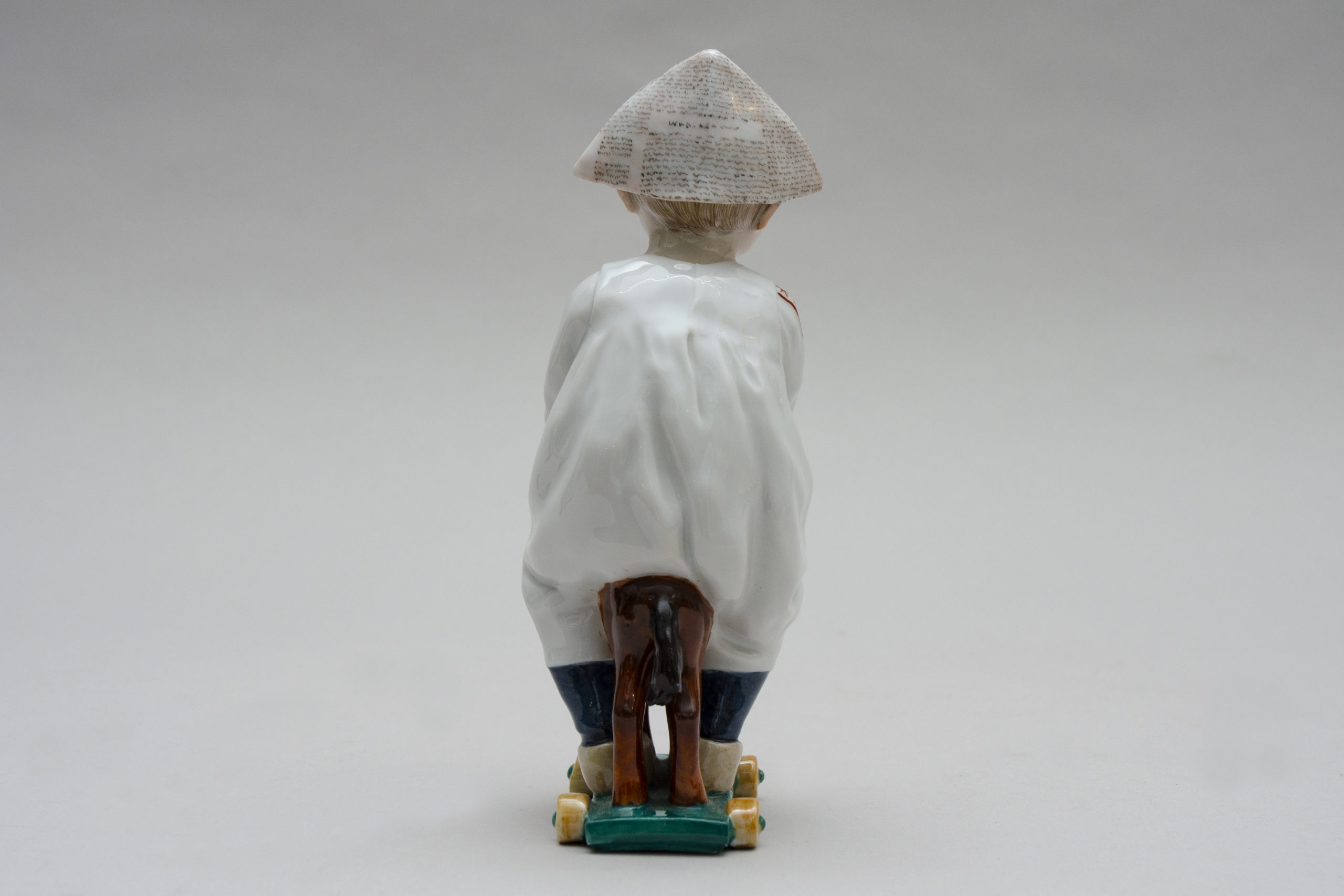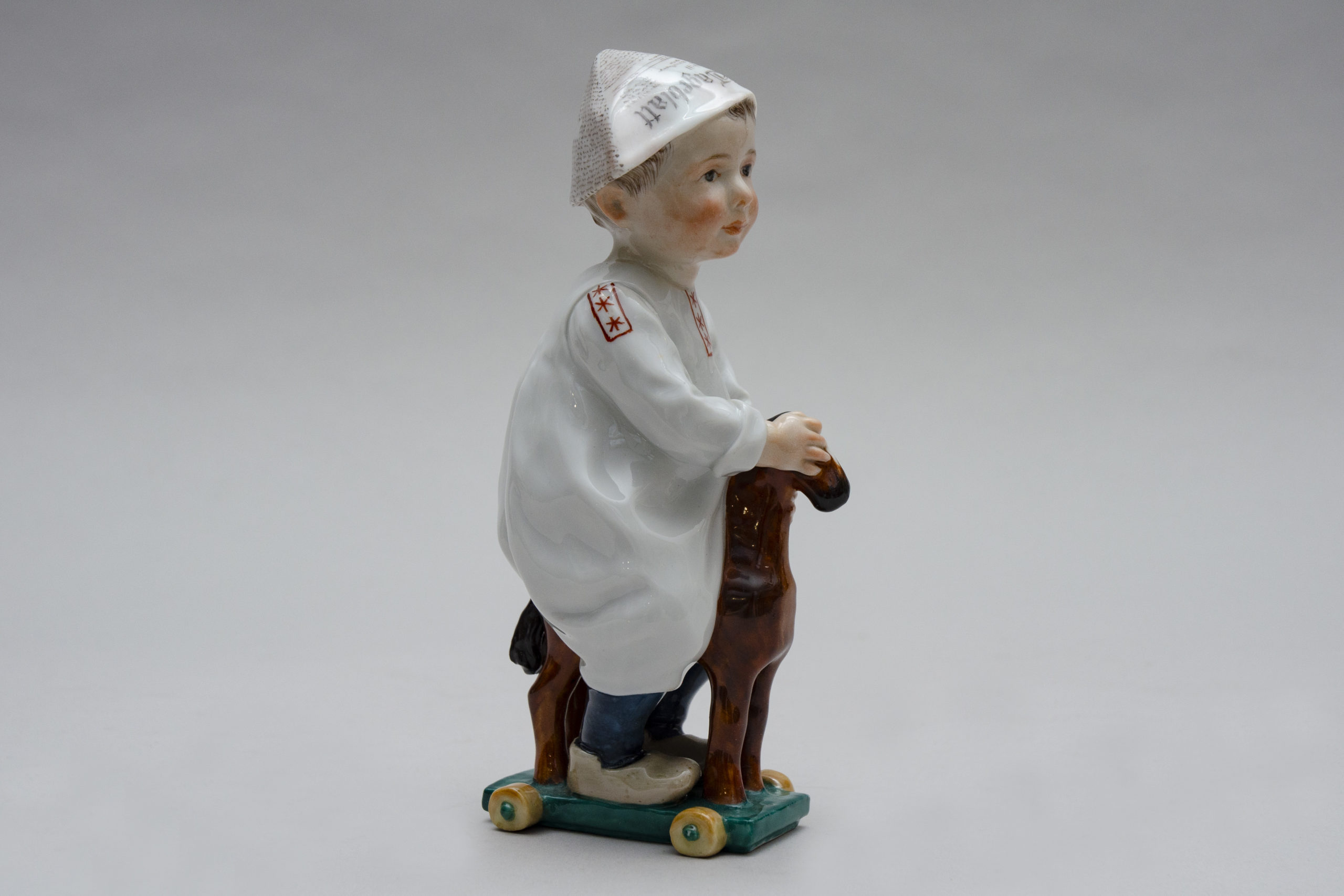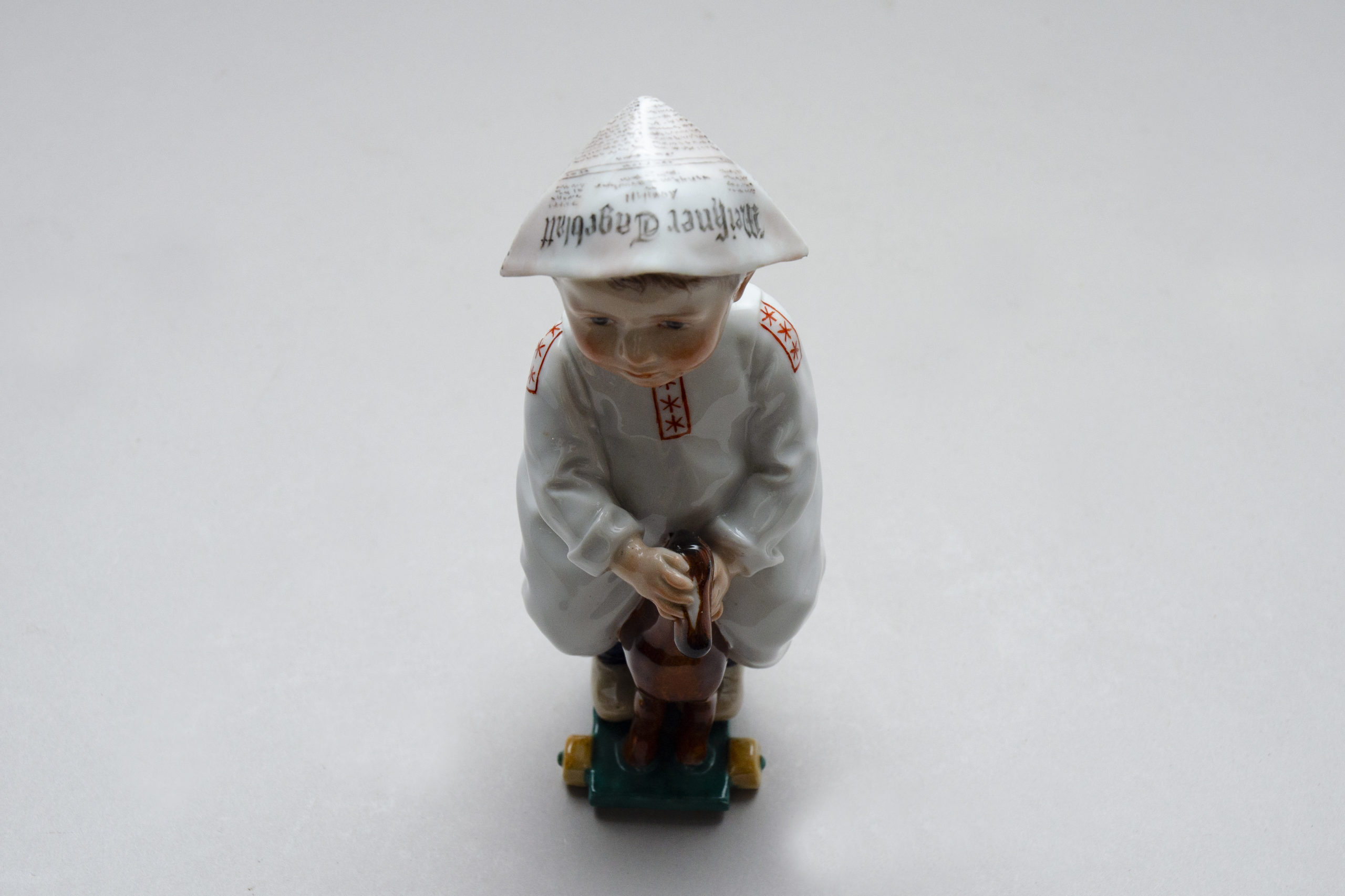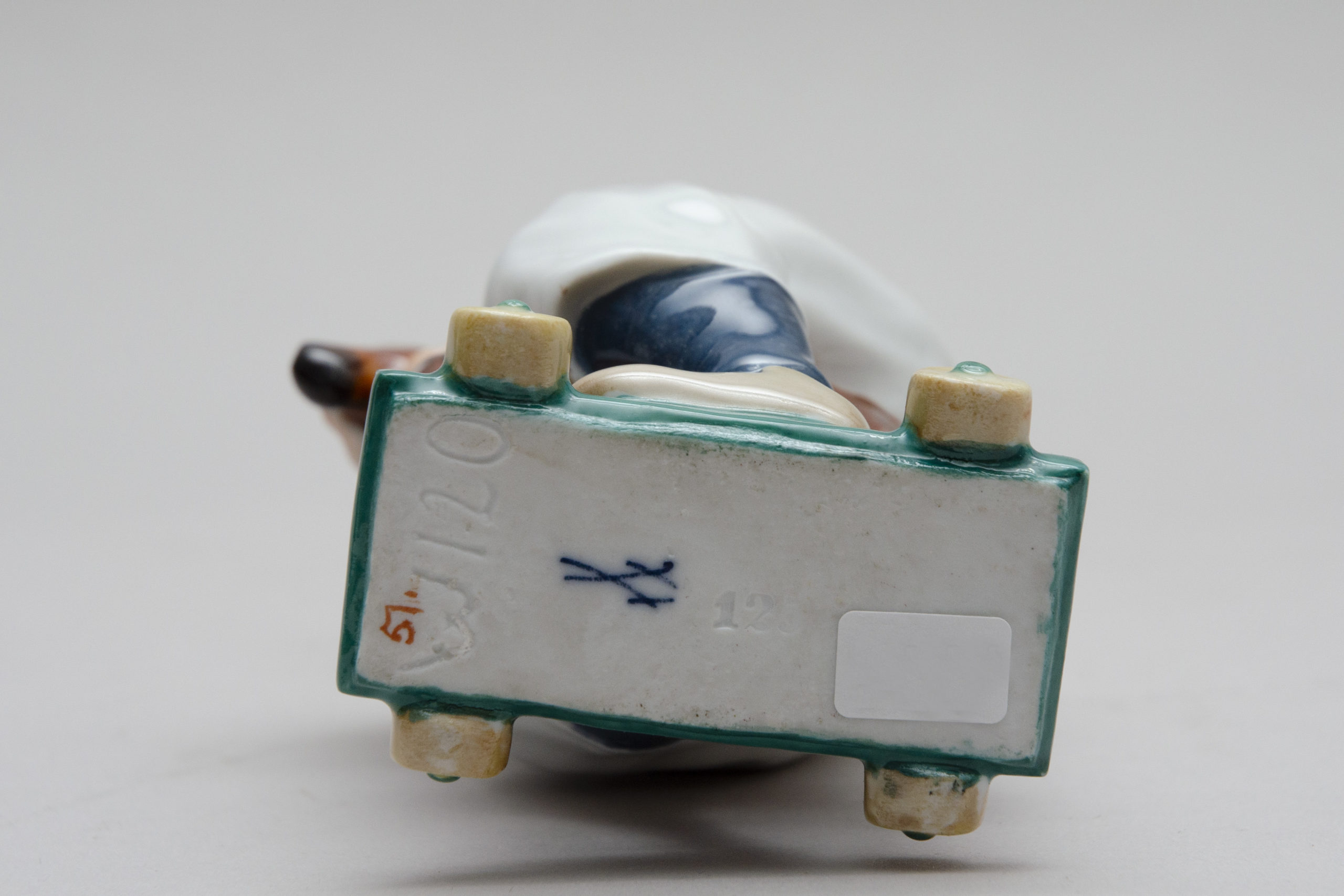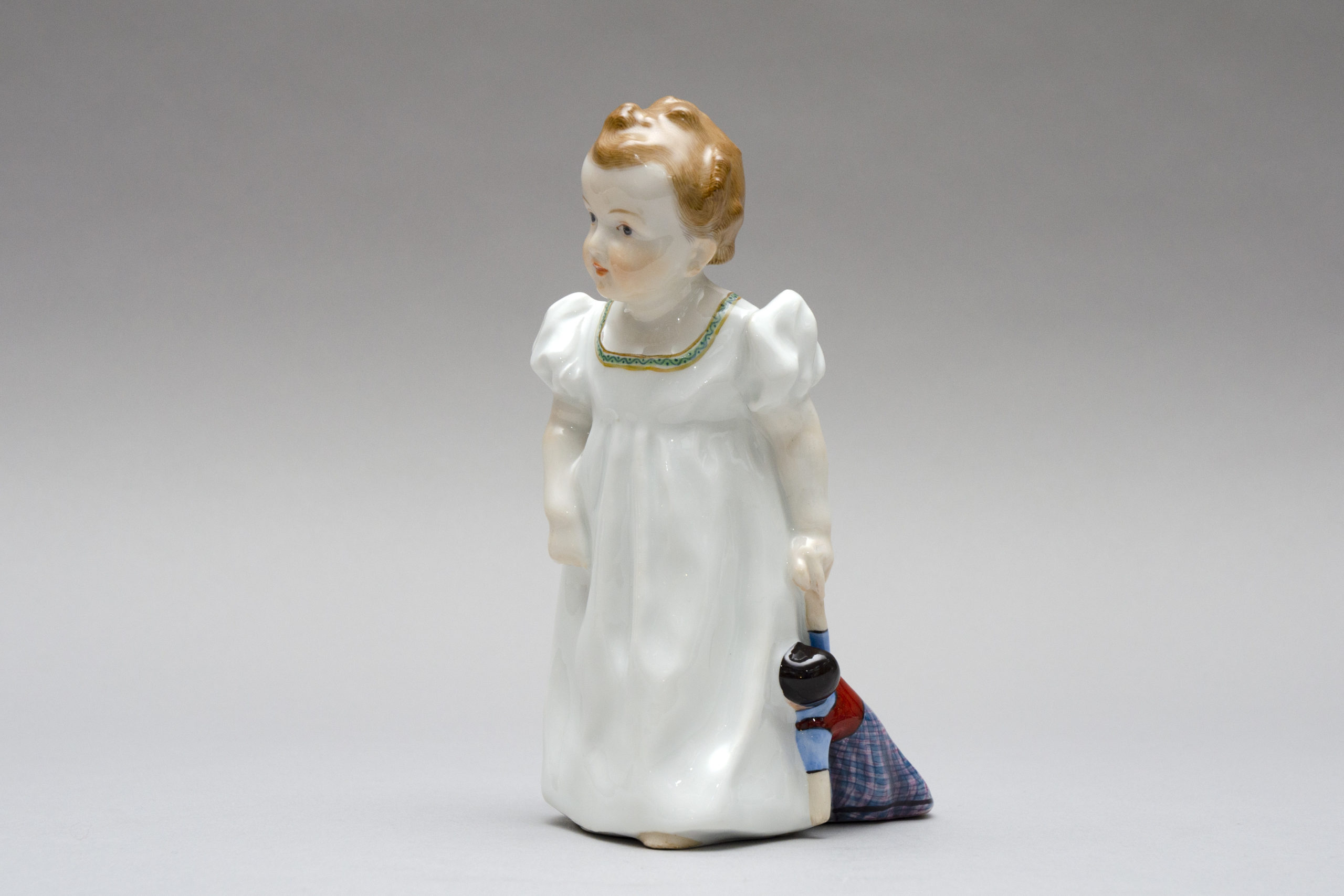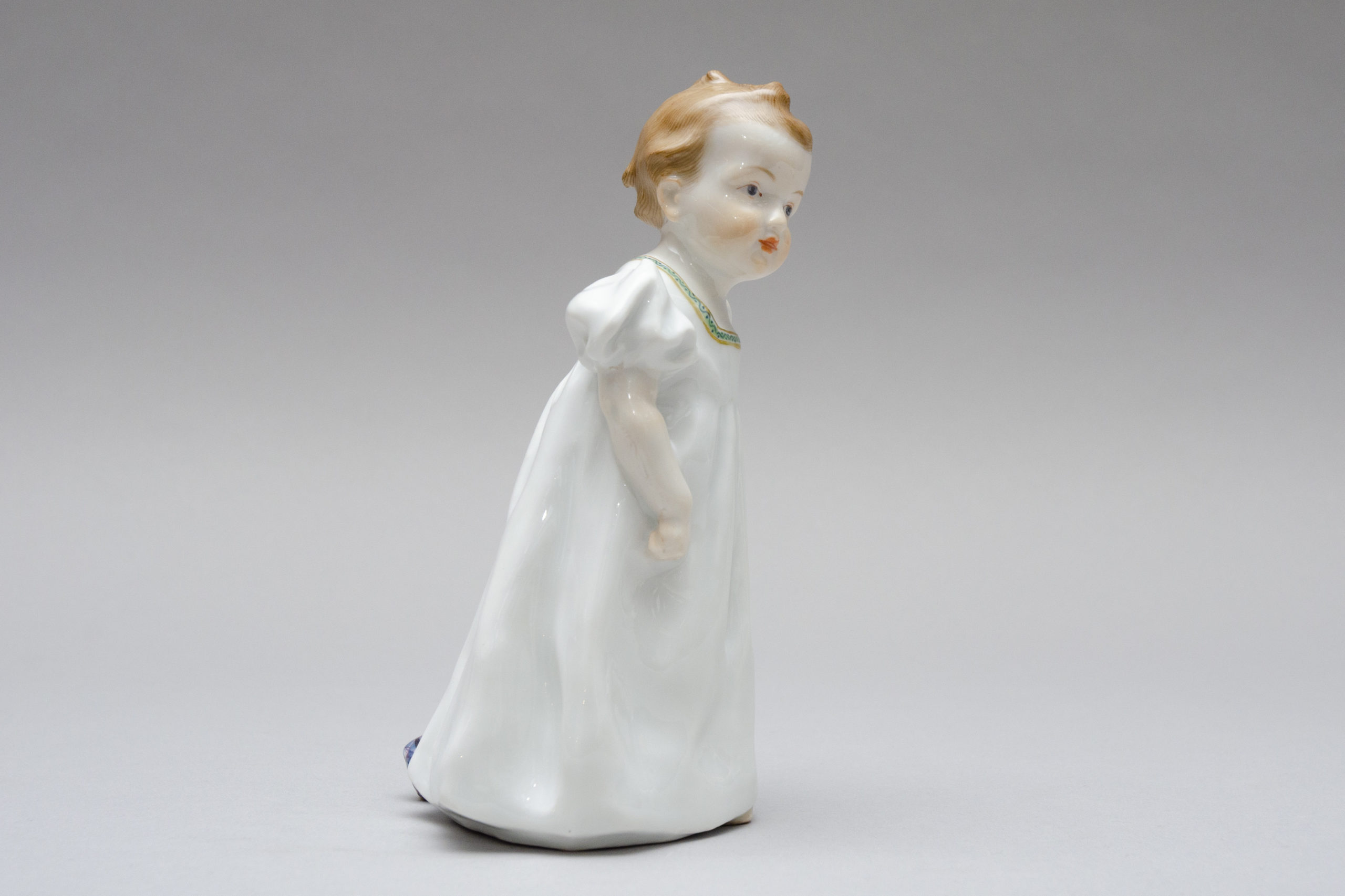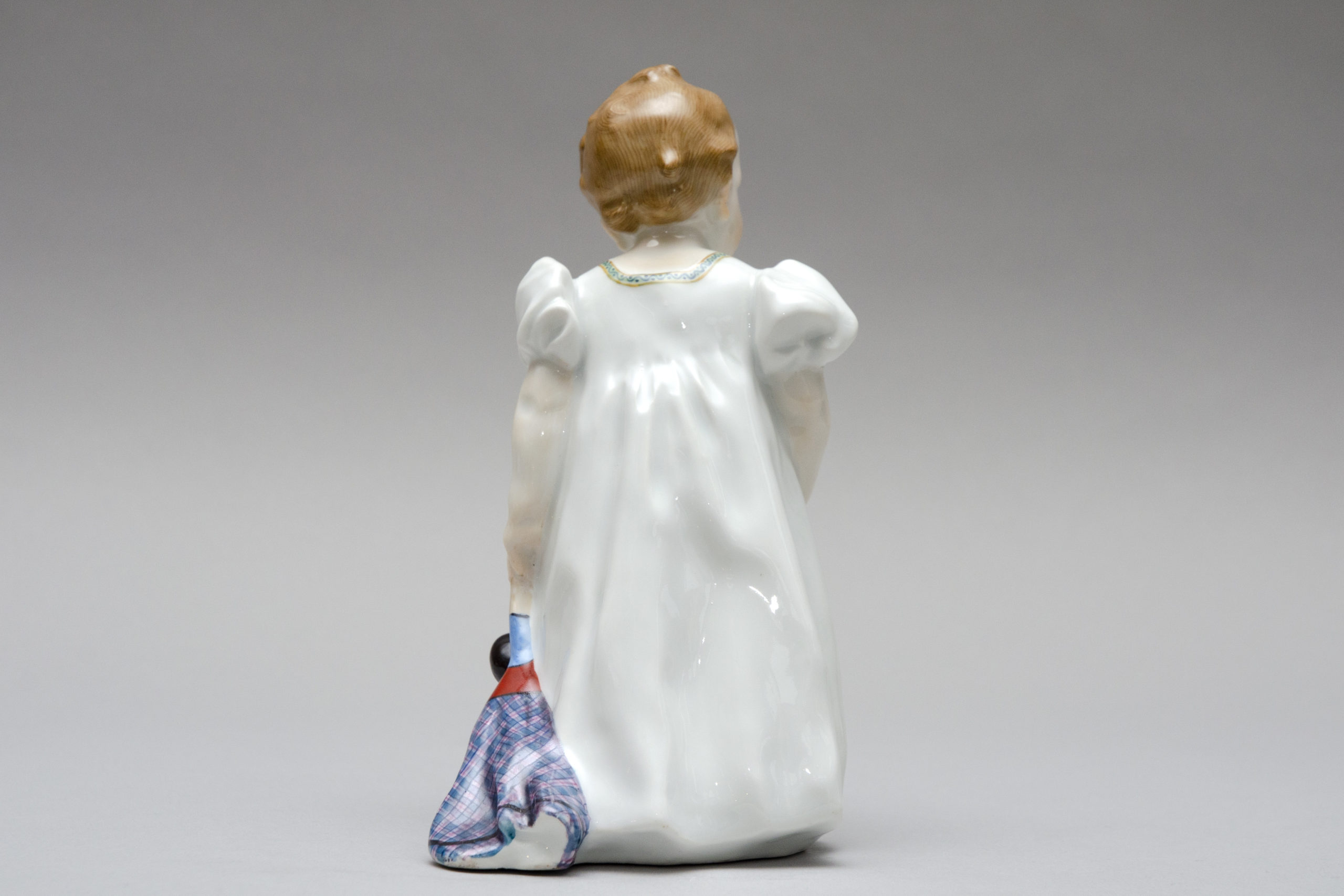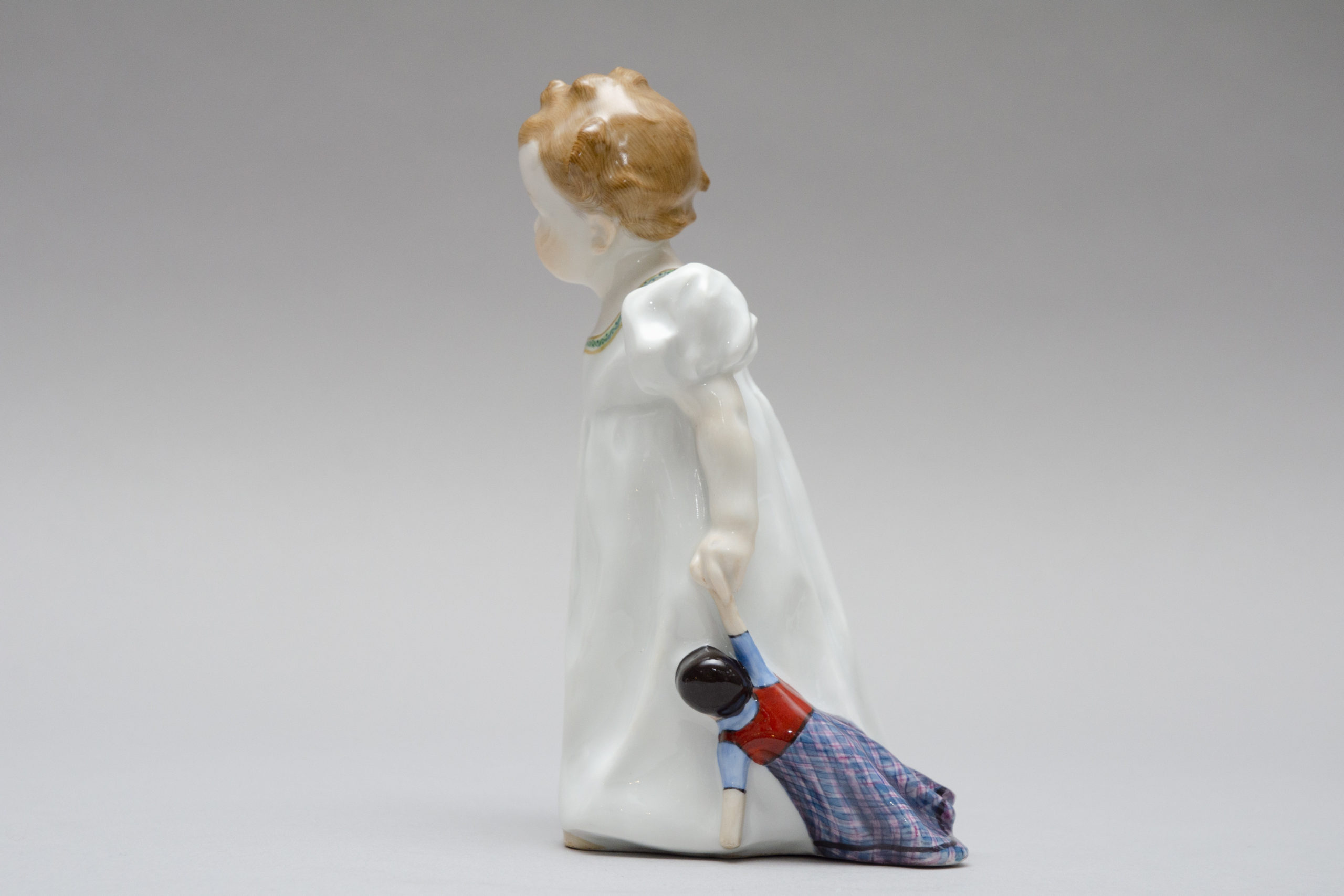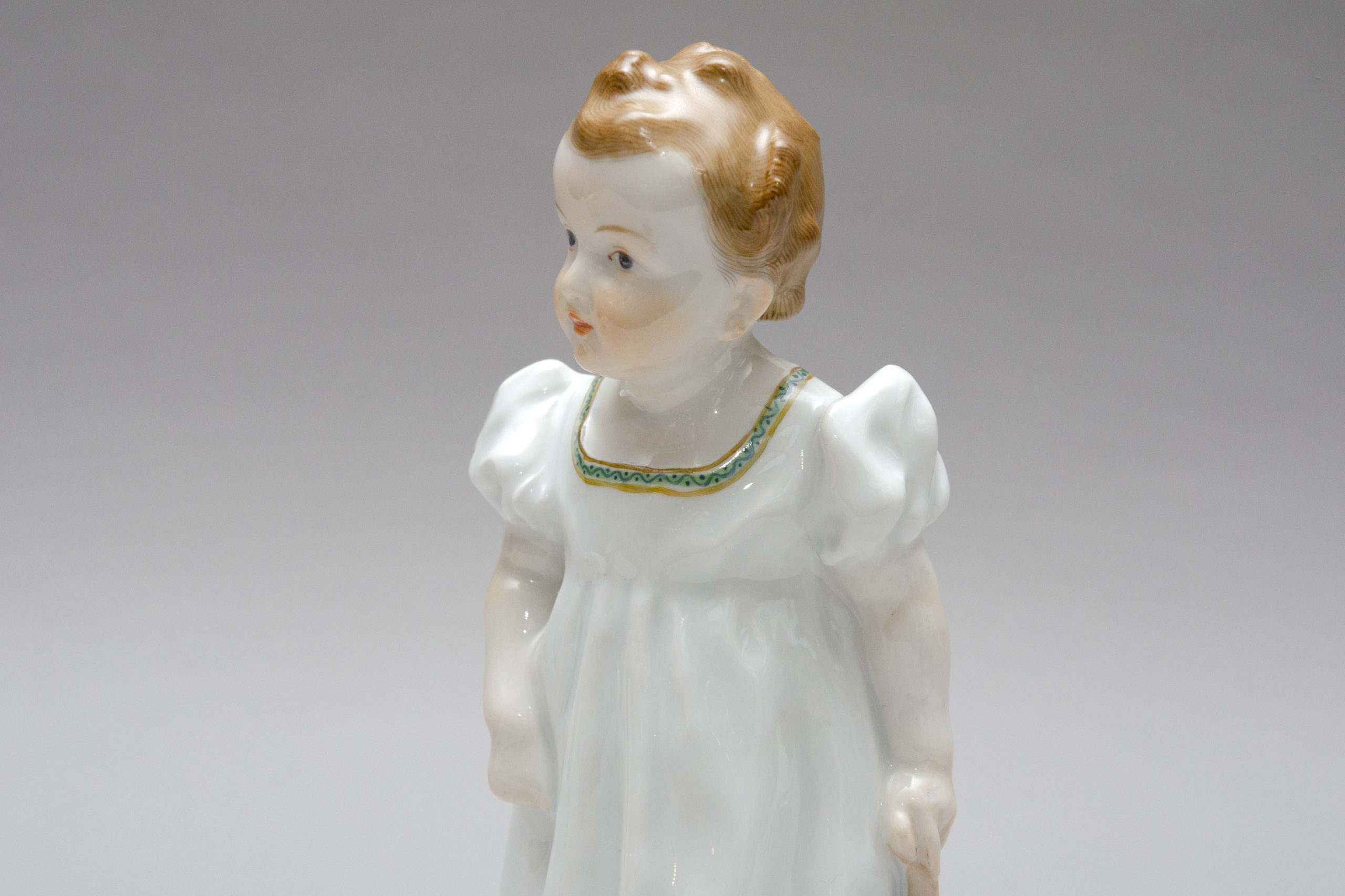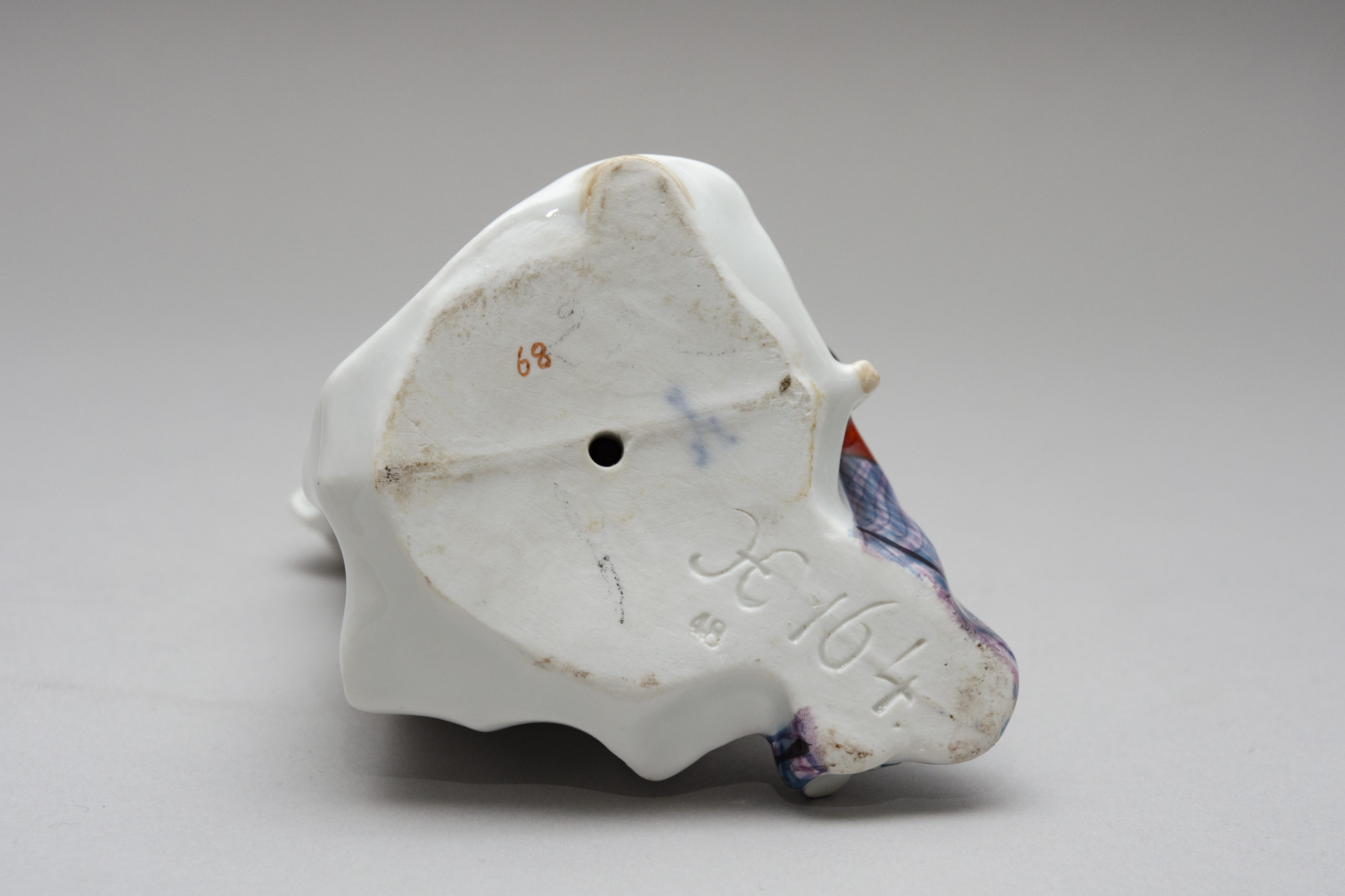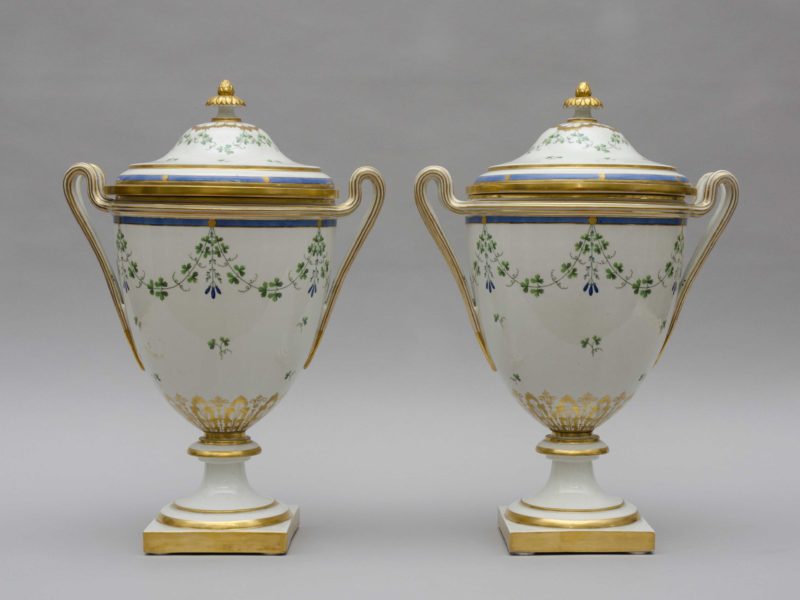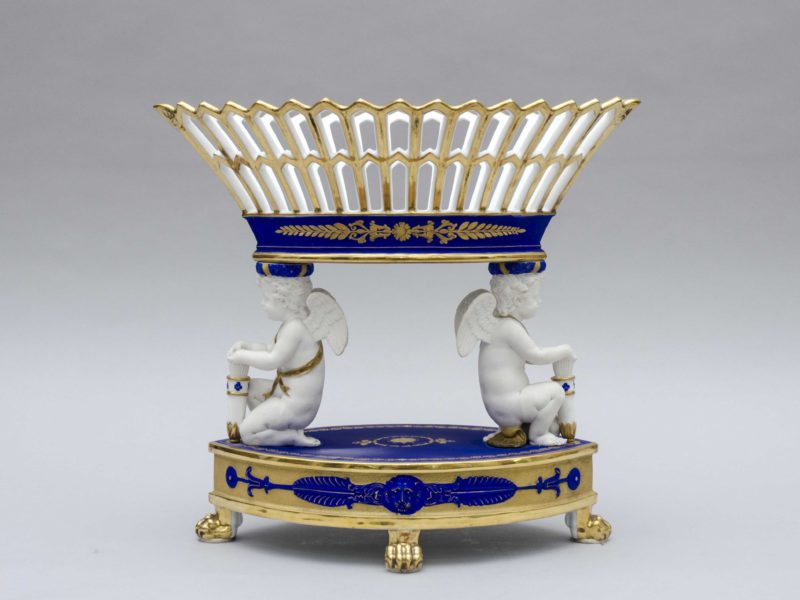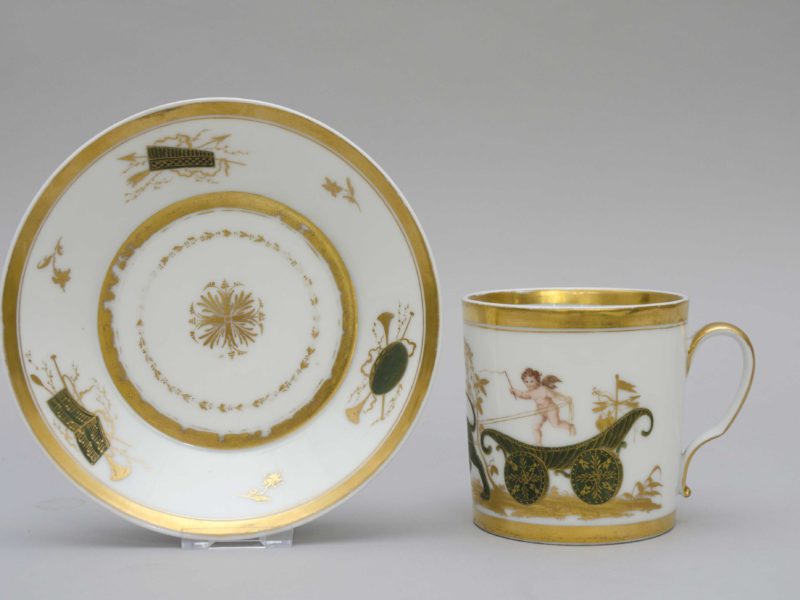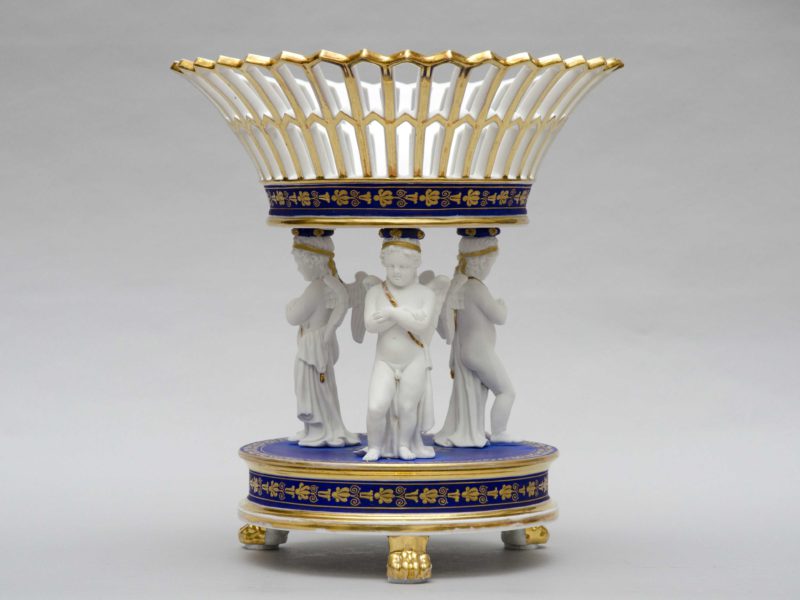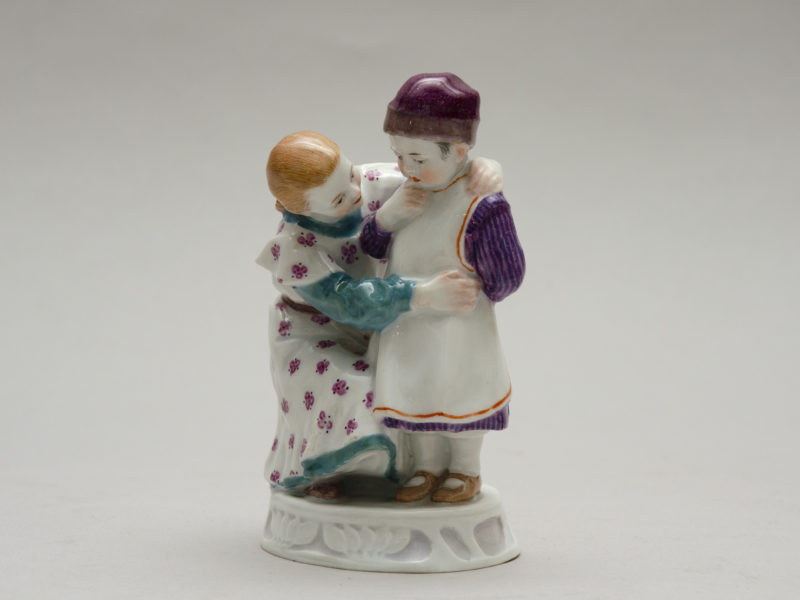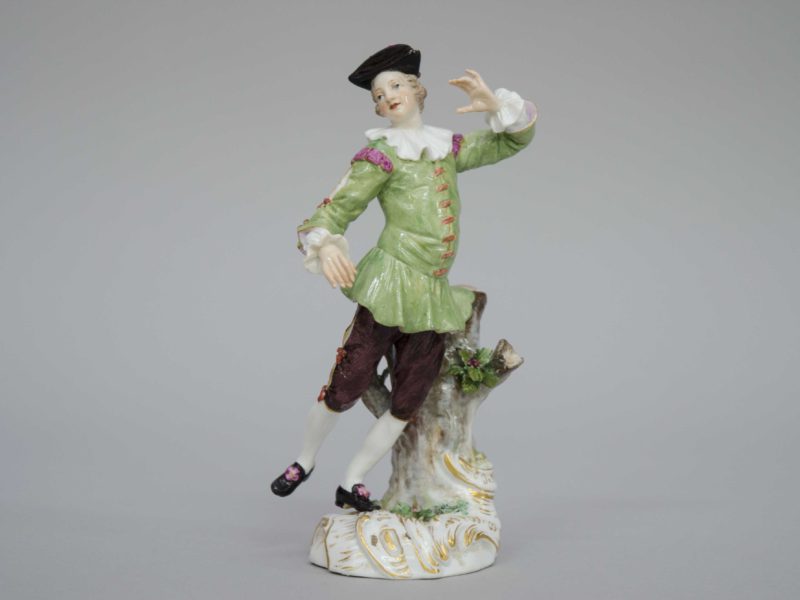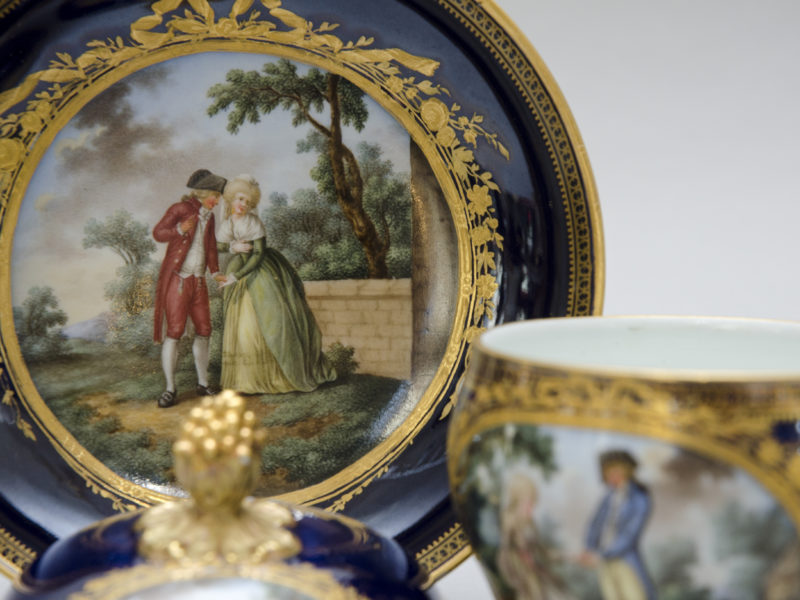
“Hentschel kinderen”, Meissen porselein
Prijs op aanvraag
Op voorraad
Contacteer onsEnsemble van kinderen van de zogenaamde “Hentschel-kinderen”. Een klein meisje zit en knijpt haar kat, een ander bekijkt zijn kleine puppy die melk uit een kom drinkt. Een ander meisje staat terwijl ze haar pop bij de hand houdt. De laatste is een jongen met een krantenhoed die op een houten paard op wielen rijdt. Meissen-porselein, tijdperk 1905-1924. Geboetseerd tussen 1904 en 1905 door Konrad Hentschel voor de Meissen-fabriek.
Afmetingen: H: 12 cm — H 17cm – H 18 cm
Manufactuur van Meissen, Art nouveau periode.
Lit: Konrad Hentschel werd geboren op 3 juni 1872 in Cölln bij Meissen. Hij is de zoon van de porseleinschilder Ernst Julius Hentschel (1843-1928) die ook in Meissen van 1861 tot 1914 zeer creatief te werk ging op het gebied van nieuwe “pâte sur pâte” en warme kleuren schildertechniek. Hij trouwde met Emma Auguste Clauss (1843-1921), de moeder van hun twee zonen, Rudolph en Konrad.
Konrad studeerde tekenkunst in the Meissen manufactuur. Van 1891 tot 1893 studeerde hij beeldhouwkunst aan de Academie voor Schone Kunsten in München bij professor Wilhelm von Rümann. Hij keerde terug naar de Meissenfabriek als “bossier”, ging in 1896 op studiereis naar Italië en werd modeldesigner in de manufactuur. Van 1899 tot 1901 studeerde hij beeldhouwkunst aan de kunstacademie in Dresden bij de professoren Karl Heinrich Epler en Robert Diez. In 1900 ontving hij een academische prijs, de “Grote Zilveren Medaille”. Tegelijkertijd blijft hij verbonden aan Meissen, voor wie hij de “Crocus”koffie- en tea set (1896) creëert voor de Wereldtentoonstelling in Parijs in 1900 (waarschijnlijk in samenwerking met zijn broer Rudolf). Konrad Hentschel ontwikkelt geleidelijk kinderfiguren van 1904 tot 1907. Ondanks zijn vrijgezellenbestaan legt hij de magische wereld van het spelende, natuurlijke en onafhankelijke kind vast. Konrad en Rudolph (ook een modeldesigner in Meissen), de gebroeders Hentschel, bloeiden sinds 1903 onder de artistieke leiding van de jonge Erich Hösel. Dit groep blaast een frisse lucht op de esthetische aantrekkingskracht van de Jugendstil modellen van Meissen. Hij stierf jong, slechts 35 jaar oud, op 8 juli 1907 aan een “hartaanval” in Meissen.
Lit: Meissen was founded in 1710 in the gothic Albrechtburg castle. It was the first porcelain manufacturer in Europe. The previous year, in German Dresden, the alchemist Johann Friedrich Böttger, “goldmaker” and prisoner of Augustus the Strong (Elector of Saxony and king of Poland) had made the discovery. Initially the factory made fine red Böttger stoneware, with relief and engraved designs. The first true porcelain, put on the market in 1713, was similar in style, in the form of teaware, statuettes and Chinese style figures. From 1720, the porcelain became brilliant white, the enamel colours were improved, the designs were fantastic “chinoiseries”; it was the era of the painter-decorators with J. G. Höroldt as a leader. In the 1730s under the Count Brühl’s directorship (until 1752), the sculptors, with J.J. Käendler at their head, became dominant, producing a range of characters, animals and birds, dinner services richly decorated in relief, and sculptural vases and tablewares. From 1756-1773 meissen porcelain was marked with the crossed swords with a dot in between the handles, known as the “dot-period”. This period marked the transition towards the neo-classical style. In 1774 Count Camillo Marcolini became director, he held this position until 1814. The more restrained neoclassical style dominated but the manufactory declined due to economic pressures and the international competition of the French factory Sèvres. In the early 19th century, technical innovations were introduced and the wares were made in the popular taste which improved the situation again. In 1830 the name of the factory was changed from Königliche Manufaktur to Staatliche Porzellan Manufaktur. Superb modelling and painting were characteristic of Meissen porcelain, and for the next 50 years its products were unsurpassed, widely exported and much imitated. Throughout the 19thC, Meissen quality remained unchanged and there were few innovations, although the late 1890s and early 1900s saw the start of a more inventive approach in the Art Nouveau manner. The Meissen factory is still operational today.
Op voorraad
Contacteer ons
